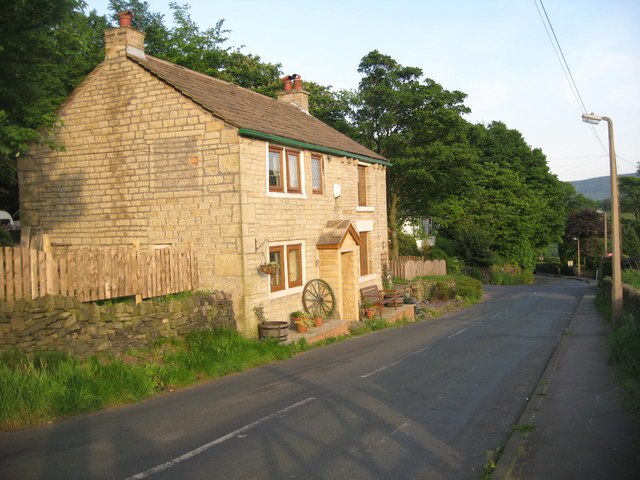Bricked in windows are a feature of many old houses in our towns. Sometimes they were an aesthetic idea, to maintain the symmetry of a house when the space behind was utilised by, for instance, a chimney or staircase. Very often, however, they had been real, working windows, bricked up to reduce the amount of tax due by the owner.
Governments have always been keen to find new ways of raising money. It was in 1696 that a tax was levied on the number of windows in a house. I’m sorry to have to admit that the man who introduced the tax was, in fact, one of my ancestors, Charles Montagu, the first Earl of Halifax. Money was needed to pay for recoinage, replacing the currency damaged by clipping – snipping little pieces of silver and gold off of coins to use for other things. This reduced the weight and therefore the value of the coins in circulation. One of the results of the recoinage was the introduction of the milled edge on coins – they were to be a deterrent to clippers.
The intention was that the new tax would be fairer to the poor, so the more windows a house had, the higher the tax. As with so many taxes, the good intention didn’t work out in practice. Initially, houses with no more than 10 windows were exempt from window tax but paid a house tax of two shillings (now 10 pence.) More than 10 windows meant a higher tax: those with between 10 and 20 windows had a further levy of four shillings, whilst 20 or more windows cost the owner and extra eight shillings. A Scottish window tax was introduced in 1748. No tax was due if a house had fewer than seven windows or a rent of less than £5 a year. We know that the Duke of Roxburgh at Floors Castle had a substantial tax bill for his 294 windows. In 1748 he paid £14 and four shillings. That is now almost £5,000. Remember that it was possible to live fairly comfortably on £20 a year then, and that many of the duke’s servants may have been earning less than £5 a year.
The theory was that poorer people would live in houses with fewer windows than those of the rich. This worked in the country, but in towns, large houses that had been subdivided were counted not as multiple dwellings but, for taxation purposes, as a single residence. Thus, a higher tax was due, to be levied on the property owner. This led to higher rents being charged to tenants. To further add to the problem, no one involved in drafting the legislation had properly defined what a window was. In the way of these things therefore, a window could be liable for tax even if it was a tiny opening, such as the perforated grating often found ventilating a walk-in larder. In 1766 liability for taxation was extended to houses with seven or more windows. From then on, there was a two thirds reduction in the number of houses with seven or more windows.
Attempts were made to evade the tax, called by the government, “incessant evasion attempts”. For example, some people blocked up the windows temporarily, when they knew that the inspectors were due to visit, unblocking them when they had left.
By as early as the beginning of the 18th century it was noted that people who lived in poorly lit and ventilated homes were the very ones who were at greater risk of smallpox, cholera and typhoid. Pamphlets emphasised this, as did popular ballads. In 1845 Dr D Reid produced a report for the local health committee of Sunderland, in north-east England. It said that the committee had, “witnessed the very evil effect and operation of the window tax; and they do not hesitate to declare that it is their unanimous opinion that the blocking up of the numerous windows caused by the anxiety of their owners to escape the payment of the tax, has, in very many instances, greatly aggravated, and even in some cases been the primary cause of much sickness and mortality.” By 1850 there was a campaign to repeal the tax. In parliament a vote to repeal failed by just three votes in April 1850. The national campaign continued until the tax was removed in 1851.
There is a popular, often repeated, myth about window tax. Some say that the phrase “daylight robbery” stems from the tax. It’s a nice thought, but wasn’t known until September 1804, when an article in The Monthly Review said that “No one can view its [France’s] large and day-light robberies, or its foul and night murders, without abhorrence.” We find it again in 1863, when it refers to overcharging. It appeared a magazine called The Temple Bar in September of that year. “It would be a bull worthy of an Irishman to call 1 shilling and 6 pence for ‘bougies’ a daylight robbery.” Bougies has two meanings. They are either a surgical instrument or candles. Probably the latter in this instance.
Image Credits: Paul Anderson .



